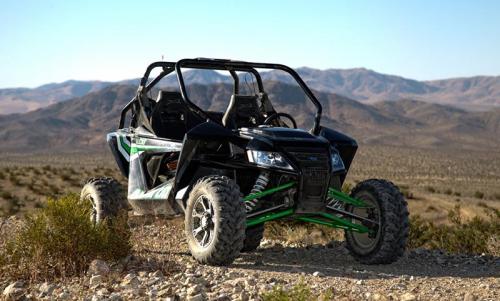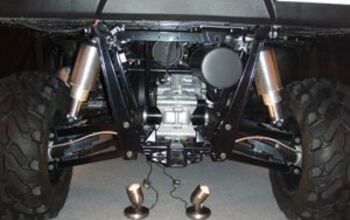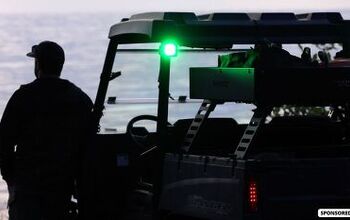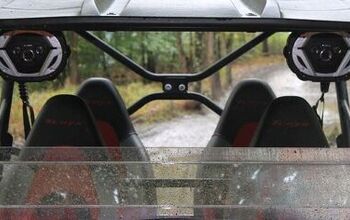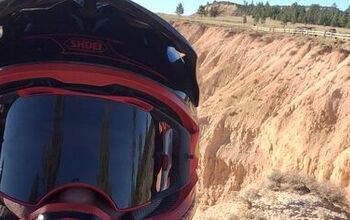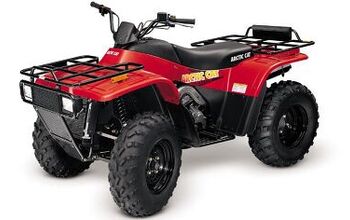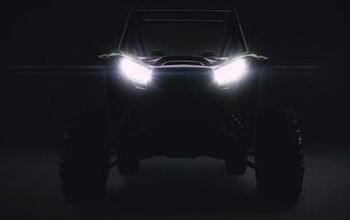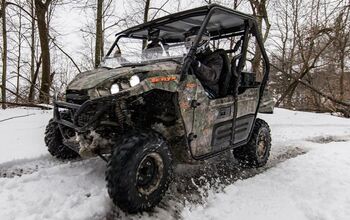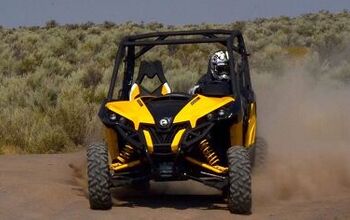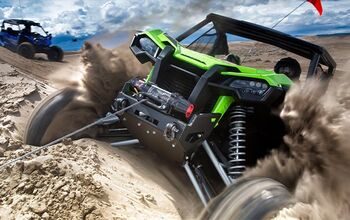Rise of the Wildcat
Less than two years ago Polaris sat basically unchallenged as the king of the Sport Side-by-Side class. While it still controls the majority of the market share in this lucrative segment, Polaris now has to look over its shoulder at two challengers – including one hungry cat in its own backyard.
Like Polaris, Arctic Cat calls Minnesota home. Also like Polaris, Arctic Cat now has multiple vehicles to choose from in the Sport SXS class – with more on the way soon. Arctic Cat took a little longer to capitalize on sport-specific UTVs, but it has jumped in with both feet with five models in the works. Is there something in the water in Minnesota? Or maybe it’s just a northern thing? After all, the only other manufacturer to dabble in this segment is BRP/Can-Am, which calls Quebec, Canada home. Seeing as these machines are most at home kicking up sand in the desert, this seems a little odd.
Does it strike anybody else as odd that the best desert machines are built by manufacturers based in Minnesota and Canada?
None of this is to say we’re surprised that Arctic Cat is trying to cut itself a hefty piece of this market share pie – especially since Polaris has been getting fat off it for more than five years. These two manufacturers have a long history and have been competing with each other for a half century in the snowmobile world.
COMPETITION: Read our review of the Polaris RZR XP 900
Fifty years is a long time to build a dedicated and loyal customer base and many of these customers were pining for something to compete with the Polaris RZR family. You may ask why they didn’t just buy a RZR if that’s what they wanted. It’s a good question, but buying a Polaris would be a bitter pill to swallow for some Arctic Cat lifers who bleed green. If you think we’re exaggerating, consider that when Arctic Cat looked to be done for and started liquidating its snowmobile line in 1981, many Arctic Cat loyalists said they’d sooner give up the sport than own a non-Arctic Cat snowmobile. In fact, Arctic Cat snowmobile sales amounted to 38 percent of the entire market – the year after Arctic Cat snowmobile production stopped!
A Wild Introduction
This was what Arctic Cat showed a stunned group of dealers in March, 2011.
Arctic Cat’s ravenous customers got their first taste of a Wildcat just over two years ago in March, 2011 at a dealer event. The world would have been none the wiser, but one person in the audience had a camera phone on hand to record the unveiling. Before long, the video was everywhere and people were begging to know more.
A couple of weeks later Arctic Cat finally acknowledged that something was in the works with a press release that was high on excitement, but short on details. Here’s what Arctic Cat CEO Claude Jordan had to say: “Inspired by race bred and race proven designs, we are committed to giving our customers the highest-performance models they deserve in the snow and off-road categories, as well as future endeavors. An extremely capable suspension is what all pure sport ROV owners are begging for, and we promise this will be an industry leader.”
Here is the first official image Arctic Cat released of the Wildcat.
Jordan wasn’t lying, but we still had no concrete information. Fortunately, he said to expect the Wildcat in dealer showrooms within 12 months, but we wouldn’t have to wait that long.
In late July Arctic Cat finally released the details people had been pining for, as well as the first official images. We learned that the Wildcat would be powered by Arctic Cat’s proven 951cc, fuel injected, V-Twin engine, which was no surprise. What did drop some jaws was learning of the Wildcat’s suspension. Just the thought of 18 inches of travel in the rear and 17 inches up front controlled by Walker Evans Racing shocks didn’t even seem possible on a SXS two years before. Now it was a reality and people were excited to try it out for themselves. Just three months later we’d be among the first to get behind the wheel of the 2012 Arctic Cat Wildcat 1000i.
Time To Ride
We soaked up every minute of ride time we could. Arctic Cat bested the RZR XP 900 by offering electronic power steering on the base Wildcat. That’s a big bonus for anybody who plans to ride the hell out these machines. Power steering just makes life easier on the driver by absorbing much of the trail chatter. Of course, suspension travel was another area Arctic Cat was clearly proud of – and for good reason. Two and three-foot whoops felt like small speed bumps. If you haven’t experienced it yet, you owe it to yourself to get to a Arctic Cat dealer for a demo ride.
VIEW: Watch our video review of the original Arctic Cat Wildcat
We’ve never before (or since) ridden a UTV that floated across whoops like the Wildcat.
Our only complaint was in the power department. It did not feel as explosive as what we’d come to expect from this engine – especially on the bottom end. We chalked it up to a clutching issue. Regardless, it was an absolute blast to ride. As well, Arctic Cat saw an immediate bump in off-road sales – to the tune of a 36% increase in third quarter sales. The Arctic Cat faithful were clearly ready for the Wildcat.
With a successful vehicle launch under its belt, Arctic Cat didn’t waste much time resting on its laurels. Instead, Cat got to work expanding the Wildcat line. The Wildcat 4 1000 was unveiled in December of 2012 – an expected move, as both Polaris (RZR XP 900) and Can-Am (Maverick 1000R MAX) had already revealed four-seat models in this super sport UTV class.
Arctic Cat added a four-seat Wildcat to the fold in late 2012.
New And Improved…Already?
Anybody who thought Arctic Cat was done at that point got a big surprise a couple of weeks later when Arctic Cat teased a new Wildcat X. By mid-January of 2013, we were introduced to the Wildcat X – and much more.
Not satisfied with just making a higher performance Wildcat, Arctic Cat gave the entire lineup a shot in the arm. This was stunning, given that the original Wildcat was just a year old. Arctic Cat addressed our concerns with the clutching by partnering with Team Industries to develop a new Drive and Driven clutch to bring more power to the ground. As well, each Wildcat also received a new lightweight crankshaft, swaybar, and 23-position, compression adjustable FOX Podium shocks!
With more than 90 horsepower on tap, the Wildcat X showed Arctic Cat was listening to its customers (and us media types).
But what about the Wildcat X? In addition to all the same goodies found on the base Wildcat, it comes decked out in front and rear aluminum bumpers, color matched seats and 27-inch Maxxis Bighorn tires. Oh yeah, it also got a huge power boost. The Wildcat X produces a claimed 90 horsepower, compared to 78 ponies on the original Wildcat!
COMPETITION: Read our review of the Can-Am Maverick 1000 X rs
Taking On The King
At this point, just about everybody thought Arctic Cat would take a bit of a breather, but these Minnesotans just couldn’t keep still. In February of 2013, Arctic Cat announced it was going to build a 50-inch wide, trail legal Wildcat. In other words, for the first time Polaris would have a direct competitor to the original RZR. It was a direct shot across the bow of the industry leader. If Polaris hadn’t been paying attention to the Wildcat before this, you can bet this got the immediate attention of Arctic Cat’s Minnesota neighbors.
For the first time since its introduction in 2007, the Polaris RZR 800 will have a direct competitor.
Before you go running to your dealer, understand that this was a bit of a premature announcement. Arctic Cat says the 50-inch Wildcat will be in dealerships by end of the 2014 fiscal year – more than a year away. Why announce this so soon? Our guess is that Arctic Cat wanted to let any of its loyal customers looking for a 50-inch Sport UTV to know they don’t have to buy a Polaris.
Of course, we still don’t know what the 50-inch Wildcat will look like, but we’ll assume it will be powered by the same 951cc V-Twin found in the rest of the Wildcat lineup. If that’s the case, it would have a significant power advantage over the 50-inch RZR. And nobody likes power more than Arctic Cat fans.
From nothing to five models in two years is an incredible feat. We can’t wait to see what’s next for the Wildcat.
It’s been a furious two years for Arctic Cat, going from zero to five Wildcat models. We’re left wondering what’s next…not only from Arctic Cat, but from Polaris. If you’ve been paying any attention to this market, you’ll know that Polaris always seems to have the next big thing up its sleeve. Arctic Cat may have a Wildcat in its corner, but Polaris is like a grizzly bear that’s been poked with a stick. Expect it to come out swinging to protect its hard-earned turf.
I have been working exclusively in digital media since 1997. I started out with TSN.ca, spending nearly nine years creating and editing content on Canada's leading sports website. I left to join VerticalScope, Inc., one of the world's largest online publishers, to start a number of powersports publications. While at VerticalScope, I've helped create and oversee content for a wide variety of different publications, including ATV.com, Off-Road.com, ArcheryTalk.com, Tractor.com, RVGuide.com, and many more.
More by Lucas Cooney



